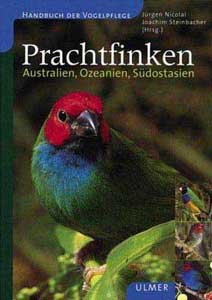gerhard schrieb:
Nearly correct, I breed both subspecies of Spermophaga hamatina quite well.
Well done Gerhard

gerhard schrieb:
My problem is to breed hybrids of Sp. h. haematina with Sp. h. pustulata. These two subspecies differ dramatically in their behaviour
Can you explain how they differ dramatically in their behaviour please ? with regard, courtship behaviour in particular. After all this is the most critical.
gerhard schrieb:
So I am wondering wether Sp.h.togoensis is really a hybrid of Sp.h.haematina and Sp.h.pustulata as it is supposed to be or not.
I see what you mean now. it is true Clement et al do hint that it is a hybrid because the togoensis birds have intermediate colouring.
gerhard schrieb:
I am not quite sure how closely related pustulata is to haematina, pustulata shows many signs of the Sp.ruficapilla (Red-headed Blue-bill).
You can determine this by DNA fingerprintiing. All you need is a few flight feathers from each bird. As far as I know, the more the DNA fingerprints are similar to each other, the more likely INFERTILITY will result if mating occurs.
Have you had fertile eggs at all from your mixed pairs ?
gerhard schrieb:
Usually they begin to build the nest within their first year in captivity but they tend to feed too much on proteins (Eggfood, mealworms,…) if they have unlimited access to it. This preference for protein seems to be the only problem at least what I found so far.
Can you explain why feeding too much on protein is a problem ?
If by this you mean that the male ends up throwing the young out of the nest a few days after they have hatched, all you do is remove the male. This is what I do with my Golden Song Sparrow pair.
Sudan Golden Sparrows Braunrückengoldsperling Passer luteus
These birds also eat a lot of protein. If you do not have other species breeding with them, then you could try stopping the animal protein altogether and feed them germinating seed after the young are 5 days old.
The type of protein you give also is important. For example, an Australian finch breeder told me that since he has started feeding loads of bush fly larvae which are the same size as the Blowfly larvae, his Golden Song Sparrows and other finch species are producing MORE YOUNG PER YEAR.
Flies also seem to have something in them which is important prior to egg laying.
If I understood Rene correctly, he told me that his Lagonosticta rara forbesi ate ant pupae, buffalo worms and blowfly larvae one week before eggs were laid and after the young firefinches fledged, they completely stopped eating the blowfly larvae but continued with the ant pupae and buffalo worms.
William
P.S. Can you tell me what Reiner meant by wann kommt endlich der zweite Band raus? Cannot figure it out

Thanks.


